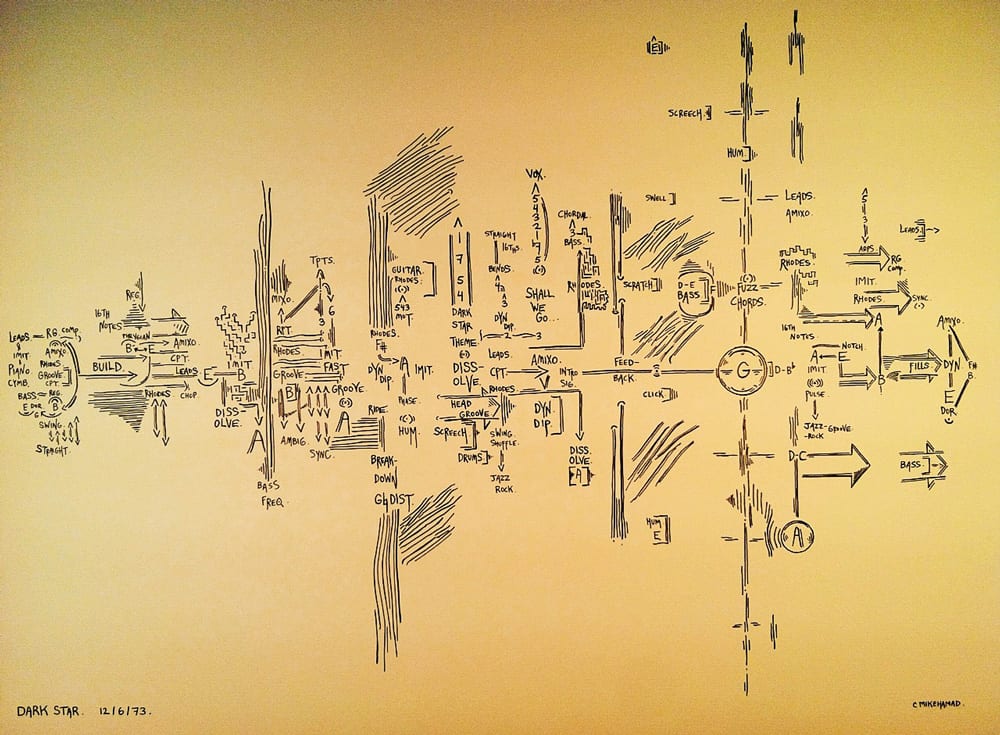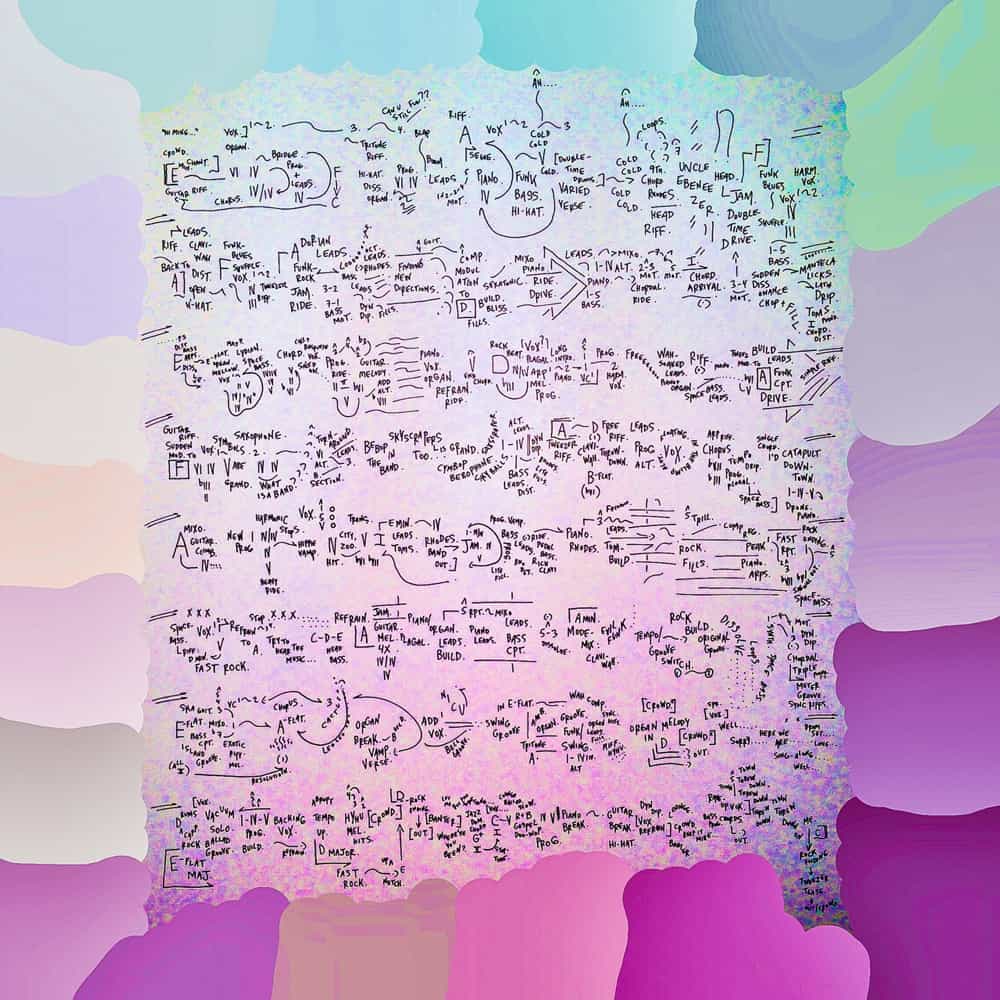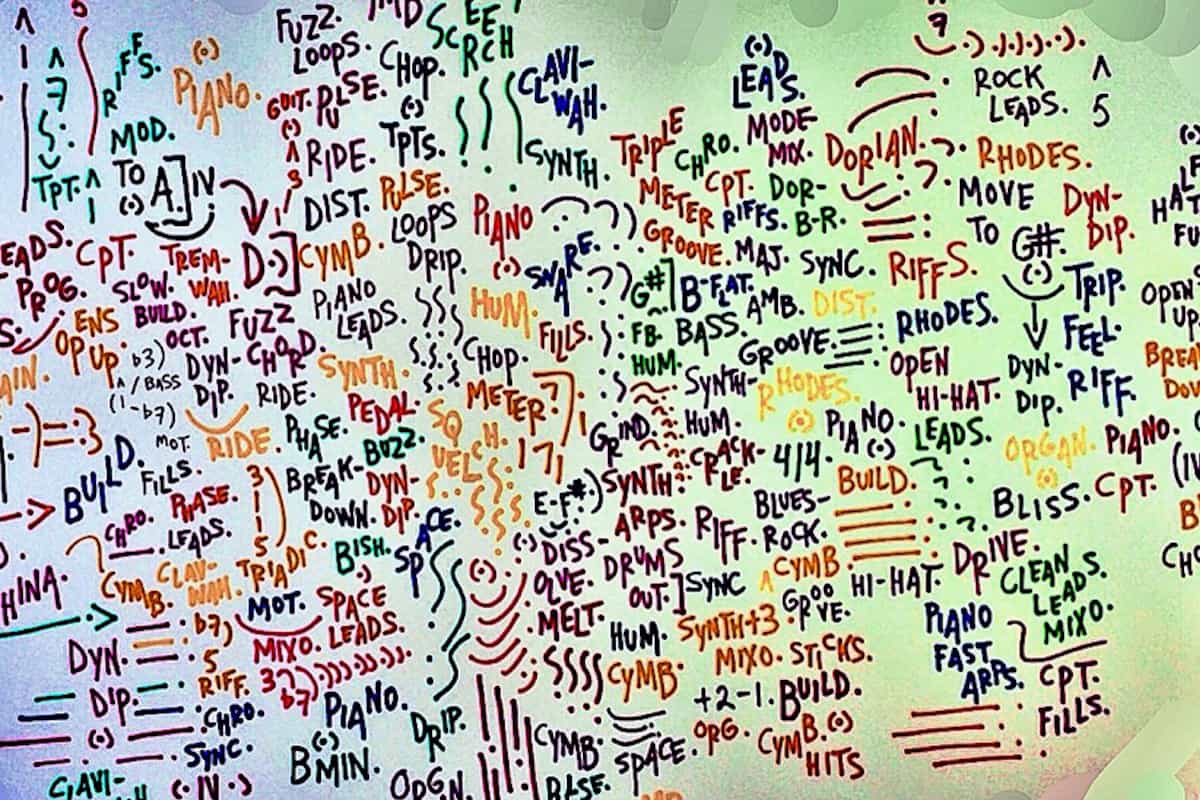People hear music — Mike Hamad sees it. In 2013, he was listening to a live Phish concert and began sketching what he heard.
Hamad, a music writer at the Hartford Courant in Connecticut, creates something he calls setlist schematics. Basically, each one is an as-it-happens rendering of a song that tries to capture what the music is doing. Not in any note-specific way, but rather in Hamad’s unique word/arrow/squiggly line calligraphy. The result is a musical map of sorts.
When he was done, he took a photo and tweeted the result, and Phish fans went wild. (Surprising, we know.)

Listen to Grateful Dead, “Dark Star,” 12/6/73
They started suggesting other Phish songs he should capture. So far, Hamad has created about 200 setlist schematics, primarily for Phish tunes, with a little Grateful Dead thrown in for jam-band measure.
While what Hamad creates is art, he has no artistic training. (He does have a PhD in musicology, however, and plays guitar.) “I have always appreciated art, but I never drew anything,” he says, “so it’s been really fun for me to figure out what I can do with a pen.”
Hamad says his work has changed as he’s created more schematics. “At first, I felt every one was an improvement over the previous one. That meant a clearer thinking, a neater calligraphy,” he says. He wanted to make them clear so people could follow along.
“Over time, I’ve tossed that out the window a little to see what I can do visually. How can the visual element reflect something in the spirit of the music? There’s a freedom there for me, because I’m not an academic. These are not going to be peer-reviewed, analytical charts. I don’t care if other scholars can read them. I’m just going to make them as fantastic and whimsical as I can. That’s what the music community responded to more.”

Listen to Phish, Merriweather Post Pavillion, Columbia, MD, Set 2, 7/27/14
Hamad admits he was initially obsessed — “I couldn’t wait for the kids to go to bed [so he could] draw every night. It was a process of discovery, I think.” Now he’s more selective. “The more detailed [the drawings have] become, they’ve taken more out of me physically and mentally,” he says. “I’m picking and choosing opportunities. I’m seeing where the inspiration comes from.”
Hamad sells the schematics selectively. “It’s not a very lucrative thing for the amount of work it requires,” he says. Instead, he chooses projects based more on whether or not the show or particular tune appeals to him.
You can follow Hamad on Twitter and on Tumblr.
Want to see more of what Hamad does? Check out this video by New York Times music critic Ben Ratliff.







